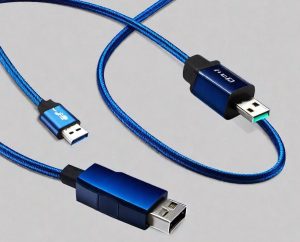
Today, each of us has to be well versed in science and technology, which makes our lives more comfortable and easier. One of these seemingly small challenges is choosing the right USB cable for your smartphone, as it is used to perform several important processes: transferring information between the gadget and the PC, connecting to the car’s multimedia system, and charging the smartphone from an external battery or power system.
However, very often you may encounter problems with the correct choice of cord, which simply won’t work with your device or may even cause it to break.
Therefore, when buying a USB cable, you should pay attention to the following tips:
- Selecting a connector
First of all, you need to pay attention to the design features of your gadget, since smartphones of recent years have a USB Type-C connector, which is considered a new generation compared to types A and B, Apple ‘s gadgets have a Lightning connector. Many devices such as cameras, printers, power banks, etc. have a Micro-USB connector that has two notches that lock the plug into place.
The next step is to collect information about the main characteristics of the wire – if it transmits less current than the charger delivers, it can damage the gadget’s battery or, at best, it will take longer to fully charge your gadget.
An important point is the quality of the cable, i.e., its surface must be smooth, without visible defects and microdamages, and there must be a solid protective element at the junction of the cable and plug.
It is advisable to give preference to the connector manufactured by the company that owns your cell phone.
Reliable brands include: Samsung, Hoco, Veron, Tornado, Florence.
- Optimal length and thickness
The energy flow is slowed or accelerated by the length and thickness of the charger.
All electrical wires, without exception, are characterized by a certain level of resistance: the longer the cable, the higher the resistance, and the lower the current it transfers to your gadget’s battery. Conversely, the shorter the wire, the faster the device is fully charged.
Thus, resistance is the most important factor in the speed and quality of charge filling. Keep in mind that as the length of the USB cable increases, the resistance starts to increase. This is a priority for gadgets that have been designed with built-in Quick Charge or Fast Charge technologies.
In addition, short cables charge the device quite quickly, but long, cheap, and thick cables slow down the process
Modern cords have different shapes and different braiding materials are used in their manufacture.
Their outer coating can be made of plastic, fabric, metal, silicone, leather, etc.
Cables with a metal braid are the longest-lasting cables in use. At the same time, plastic ones offer the shortest warranty and need to be replaced very quickly.
The most common and popular wire shapes among users are round and flat. However, round showers often and quickly break in different places, so they should not be too hard.
Flat models are more profitable because they don’t get tangled or broken, so they don’t need to be replaced often, as they serve their owners for years.
- Fast charging cable. Tips.
- Read the label carefully and check the wire markings and wattage.
- Check the current strength. If the device supports a current of 2 Amps or more, this is what you need, if less, then this is a regular cord.
- The thickness of the cable, you need to avoid ultra-thin options.
- Pay attention to the braid, because it protects the cable from temperature extremes and various mechanical damages, and also serves as insulation against high voltage.
Keep in mind that an incorrectly selected USB cable for your device can cause problems, such as slow charging speed, fast fraying, flashing and heating, inability to predict power, and battery failure in mobile devices. Therefore, you need to be careful when choosing USB cables for charging.

